
International Journal of Built Environment and Sustainability
Scope & Guideline
Bridging Theory and Practice for a Sustainable Tomorrow
Introduction
Aims and Scopes
- Sustainable Architecture and Design:
Research on sustainable architectural practices, including passive design strategies, biomimicry, and innovative materials that enhance energy efficiency and environmental impact. - Urban Planning and Development:
Studies that address urban sustainability, including the effects of urbanization on local ecosystems, community engagement in planning processes, and strategies for resilient urban development. - Construction Management and Technologies:
Exploration of advanced construction methodologies such as Industrialized Building Systems (IBS), Building Information Modeling (BIM), and the integration of artificial intelligence in construction management. - Climate Adaptation Strategies:
Research focused on adapting built environments to climate change, including assessments of building performance under varying climate conditions and the implementation of green infrastructure. - Sociocultural Dimensions of Built Environments:
Investigations into how built environments influence social behaviors, cultural practices, and community well-being, particularly in the context of marginalized or diverse populations.
Trending and Emerging
- Integration of Artificial Intelligence:
Recent publications emphasize the role of AI in enhancing sustainability in architecture and construction, showcasing its potential to optimize design processes and resource management. - Climate Resilience and Adaptation:
There is a noticeable increase in research focusing on climate resilience, including strategies for adapting buildings and urban areas to the impacts of climate change, reflecting a pressing global concern. - Green Infrastructure and Urban Ecology:
Emerging studies explore the implementation of green infrastructure as a means to enhance urban sustainability, improve public health, and foster biodiversity in urban settings. - Social Sustainability and Community Engagement:
A growing body of work highlights the importance of social sustainability, examining how urban design and architecture can support community well-being and promote inclusive practices. - Health and Well-being in Built Environments:
Research increasingly addresses the connections between built environments and health outcomes, particularly in the context of post-pandemic recovery and the design of supportive public spaces.
Declining or Waning
- Traditional Construction Practices:
Research related to conventional building methods has seen a decline as the focus shifts towards innovative and sustainable construction techniques that align with modern sustainability goals. - Post-Occupancy Evaluations:
While important, studies specifically evaluating post-occupancy conditions of buildings have decreased, as more emphasis is placed on upfront design strategies and sustainability metrics during the planning phase. - Historical Architecture Studies:
Papers focusing solely on historical architecture without a sustainability angle have become less frequent, indicating a trend towards integrating historical insights with contemporary sustainability practices. - General Environmental Impact Assessments:
Broad assessments lacking specific applications or innovative frameworks have waned, as there is a growing preference for targeted studies that provide actionable insights for specific built environment challenges.
Similar Journals

ICONARP International Journal of Architecture and Planning
Exploring contemporary challenges in architecture and planning.ICONARP International Journal of Architecture and Planning is an esteemed open-access publication that serves as a pivotal platform for fostering innovative research and discussions in the fields of architecture and urban design. Published by KONYA TECHNICAL UNIVERSITY, FACULTY OF ARCHITECTURE & DESIGN, this journal has been committed to the dissemination of high-quality academic work since 2013, promoting accessibility and global collaboration among researchers, professionals, and students. With its rigorous peer-review process and a focus on contemporary architectural and planning challenges, ICONARP seeks to contribute significantly to scholarly discourse and practical applications within the built environment. The journal is indexed in various scientific databases, enhancing its visibility and impact in the academic community. By appealing to a diverse audience, ICONARP encourages interdisciplinary studies and innovative solutions that address the complexities of modern architecture and urban living.

Russian Journal of Building Construction and Architecture
Connecting Theory and Practice in Sustainable DevelopmentRussian Journal of Building Construction and Architecture (ISSN: 2542-0526; E-ISSN: 2542-0526), published by the esteemed Voronezh State Technical University, serves as a vital platform for disseminating innovative research and practical applications in the fields of building construction and architecture. This journal, situated in Voronezh, Russia, aims to explore both the theoretical and empirical aspects of contemporary architecture and construction practices, fostering a robust dialogue among researchers, professionals, and academics. With an emphasis on open access to knowledge, the journal significantly contributes to global discourse by ensuring that findings are accessible to a wide audience. Underlining the importance of sustainable development and cutting-edge technologies in construction, the journal strives to publish high-quality research that addresses the challenges faced in today’s building environment, making it an invaluable resource for those committed to advancing the industry.
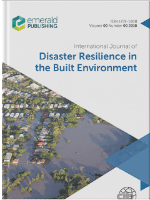
International Journal of Disaster Resilience in the Built Environment
Empowering communities through resilient design.International Journal of Disaster Resilience in the Built Environment is a leading peer-reviewed journal published by Emerald Group Publishing Ltd, focusing on the crucial intersection of disaster resilience and the built environment. Established in 2010, this journal serves as an essential platform for researchers, professionals, and students engaged in the fields of Building and Construction, as well as Safety, Risk, Reliability and Quality, maintaining a respectable Q3 ranking in both categories as of 2023. With a commitment to enhancing global knowledge on resilient construction practices, the journal examines innovative strategies to mitigate risk and enhance safety in built structures. Despite its robust academic reputation, it currently operates without an open access model, emphasizing its curated approach to high-quality scholarship. The publication aims to foster interdisciplinary collaboration and advance the development of sustainable practices within the context of disaster risk reduction, making it a vital resource for anyone dedicated to improving resilience in the built environment.
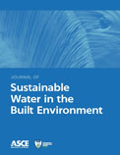
Journal of Sustainable Water in the Built Environment
Pioneering knowledge for resilient water systems in cities.The Journal of Sustainable Water in the Built Environment, published by the American Society of Civil Engineers (ASCE), is a pivotal platform dedicated to advancing knowledge and practices in the fields of water resource management and sustainable infrastructure. Since its inception in 2015, the journal has adopted a rigorous approach to publishing high-quality research and reviews, as evidenced by its Q2 ranking in both Management, Monitoring, Policy and Law and Water Science and Technology categories as of 2023. With an ISSN of 2379-6111, the journal plays a critical role in shaping policies and innovative technologies that address the unique challenges associated with water sustainability in urban environments. Located in the United States, it attracts a diverse audience of researchers, professionals, and students focused on interdisciplinary solutions. Although it follows a traditional publishing model, the journal is committed to making impactful contributions to the academic community and beyond, fostering collaboration and knowledge exchange through its publications. Address all correspondence to 1801 Alexander Bell Dr, Reston, VA 20191-4400.
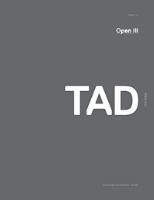
Technology-Architecture + Design
Elevating the Discourse on Smart UrbanismTechnology-Architecture + Design is a pioneering academic journal published by Taylor & Francis Ltd, dedicated to exploring the intersection of technology within architectural and design practices. With an impactful presence in the field since its inception in 2017, the journal has quickly ascended in academic rankings, achieving a Q2 categorization in Architecture and a notable Q1 ranking in Visual Arts and Performing Arts, underscoring its significance in these dynamic areas of study. The journal aims to provide an open platform for innovative research that addresses contemporary challenges in architecture and urban planning, utilizing technological advancements as a central theme. As a vital resource for scholars, practitioners, and students alike, Technology-Architecture + Design publishes high-quality, peer-reviewed articles that contribute to the discourse surrounding sustainable design, digital fabrication, and smart urbanism, making it an essential read for those passionate about the future of built environments.

Frontiers in Sustainable Cities
Transforming Urban Landscapes through Innovative ScholarshipFrontiers in Sustainable Cities, published by FRONTIERS MEDIA SA, is an esteemed academic journal dedicated to advancing the fields of Urban Studies, Renewable Energy, and Public Administration. With a commitment to open access since 2019, the journal facilitates the dissemination of high-quality research aimed at creating sustainable urban environments. Operating from Lausanne, Switzerland, this influential publication supports knowledge exchange among researchers, professionals, and students involved in the complex dynamics of urban sustainability. The journal has achieved notable recognition, reflected in its quartile rankings—Q1 in Urban Studies and Q2 in both Public Administration and Renewable Energy, Sustainability and the Environment—indicating its relevance and impact within the scholarly community. Researchers benefit from a broad reach through its open access policy, enhancing visibility and accessibility of important findings that contribute to the development of sustainable cities globally.
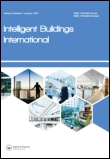
Intelligent Buildings International
Advancing Smart Solutions for Sustainable ArchitectureIntelligent Buildings International, published by Taylor & Francis Ltd, is a premier journal dedicated to advancing knowledge in the interdisciplinary domains of building construction, civil engineering, computer science applications, and planning. Since its inception in 2009, this journal has become a vital resource for researchers, professionals, and students, offering a platform for high-quality scholarly articles that explore innovative strategies and technologies in intelligent building design and efficiencies. With its significant impact factor reflected in its Q2 and Q3 quartile rankings across various related fields, and strong Scopus rankings placing it among the top journals in Geography, Building, and Civil Engineering, Intelligent Buildings International stands out for its commitment to fostering research that enhances the sustainability and functionality of contemporary architectural practices. Readers can access a wealth of articles that illuminate the complexities of smart building technologies and their implications for future construction practices, making it an essential addition to any academic library.

Prostor
Innovating Through Interdisciplinary PerspectivesProstor is an esteemed scholarly journal published by the University of Zagreb, Faculty of Architecture, dedicated to advancing knowledge in the fields of architecture, urban planning, and spatial studies. Since transitioning to an Open Access model in 2006, Prostor has made significant strides in providing unrestricted access to its contents, fostering a vibrant community of researchers, practitioners, and students interested in contemporary issues surrounding the built environment and social space. The journal's commitment to quality is reflected in its impressive rank within Scopus, particularly in the Arts and Humanities category (64th percentile) and within Engineering (Architecture) at the 49th percentile. Covering a broad array of interdisciplinary topics, Prostor serves as a vital platform for disseminating innovative research and fostering dialogue among professionals while engaging with practical and theoretical explorations of spatial design. With coverage spanning over two decades, Prostor remains a crucial resource for anyone seeking to navigate the complexities of architecture and urban studies.
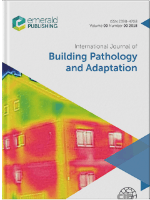
International Journal of Building Pathology and Adaptation
Exploring innovative pathways to building preservation.International Journal of Building Pathology and Adaptation is a premier publication dedicated to advancing knowledge in the field of building pathology and adaptation. Established by the esteemed Emerald Group Publishing Ltd, this journal serves as a vital platform for researchers and practitioners focusing on the assessment, preservation, and innovative adaptation of built environments. With an impressive Q2 ranking in both Building and Construction and Civil and Structural Engineering, and a Scopus ranking of #62 out of 223 in the relevant engineering disciplines, the journal showcases high-quality research with significant practical implications. Although currently not featuring an open-access model, its access options cater to a wide audience aiming to explore cutting-edge studies from 2017 to 2024. The journal's commitment to bridging the gap between academic inquiry and real-world application makes it an essential resource for anyone dedicated to advancing the resilience and sustainability of the built environment.
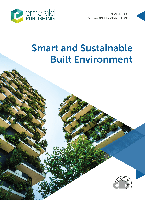
Smart and Sustainable Built Environment
Shaping resilient communities through innovative design.Smart and Sustainable Built Environment, published by Emerald Group Publishing Ltd, is a prestigious journal dedicated to advancing the knowledge and practice of sustainable development within the landscape of modern architecture, building, and civil engineering. With an impact factor that reflects its strong influence and standing—illustrated by its consistent categorization in the Q1 tier across several relevant fields including Architecture, Building and Construction, and Urban Studies—this journal has become an essential resource for researchers, practitioners, and policymakers alike. Operating in the vibrant academic backdrop of the United Kingdom, it aims to publish cutting-edge research that addresses critical issues at the intersection of sustainability and built environments. The journal is also indexed in Scopus with impressive rankings, ensuring visibility and credibility. The scope of the journal encompasses a broad array of topics, encouraging contributions that discuss innovative practices, policies, and technologies to foster smart and sustainable development. With its dedication to publishing high-quality research from 2012 to 2024, Smart and Sustainable Built Environment is at the forefront of fostering dialogue and collaboration in the pursuit of sustainable solutions for our built environment.